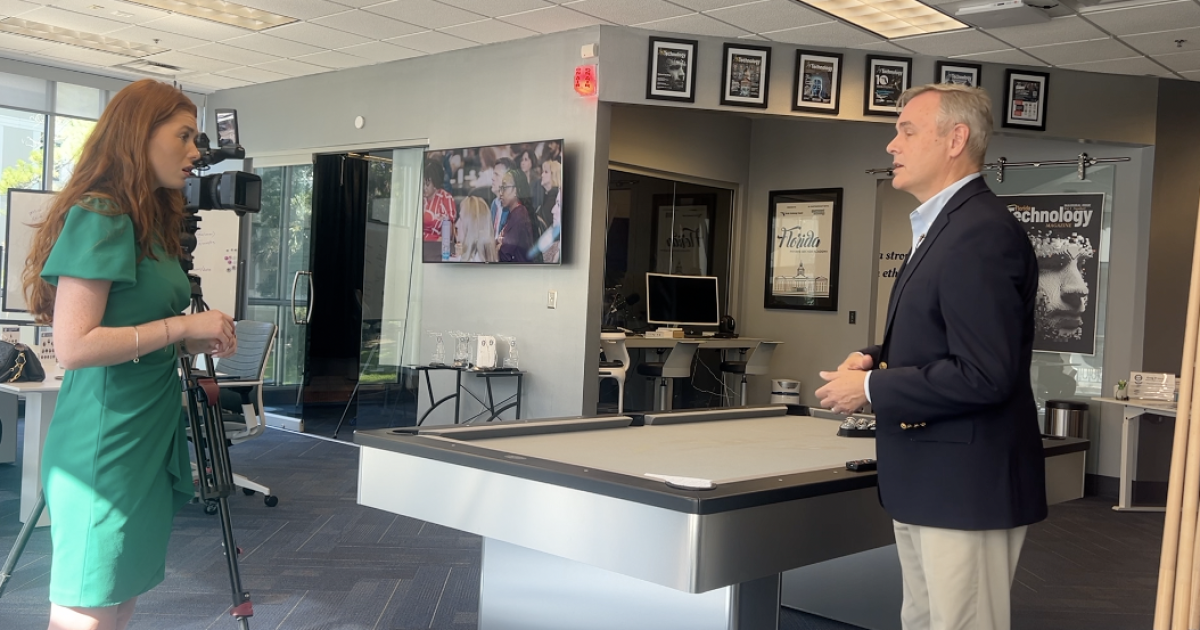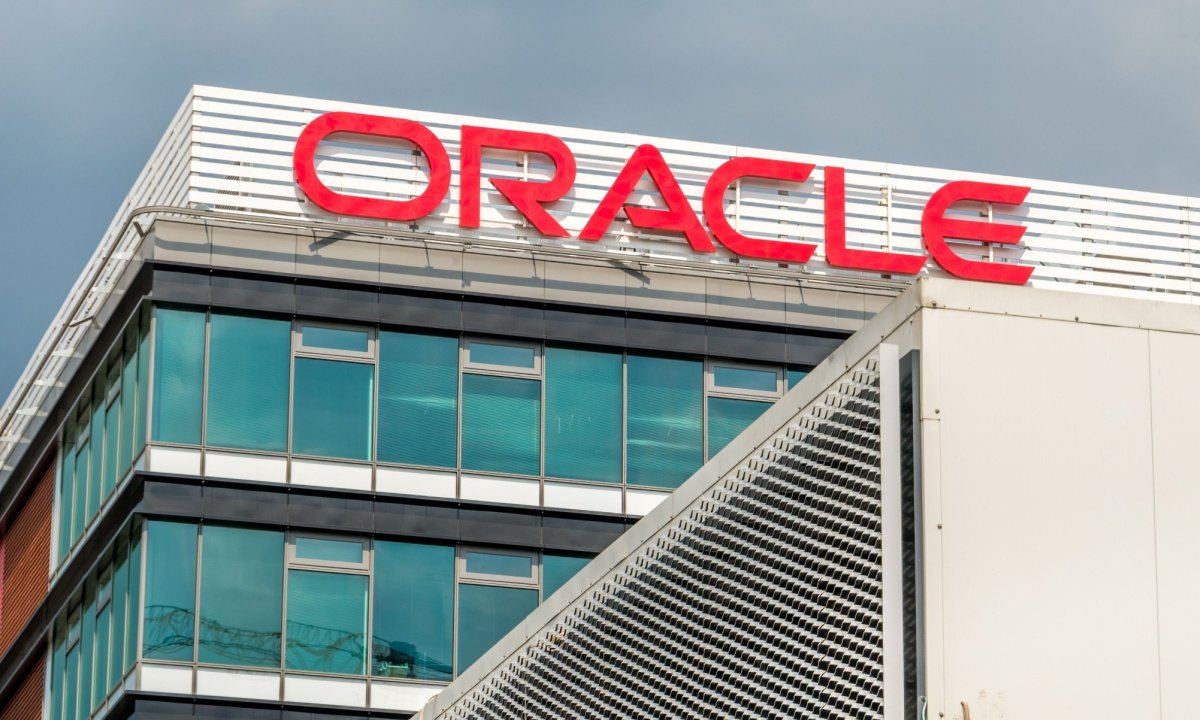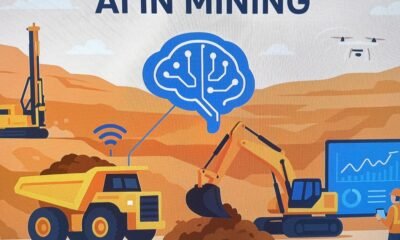AI Research
Helping Leon County seniors harness artificial intelligence and avoid scams

TALLAHASSEE, Fla. (WTXL) — Leon County and community partners are developing a program for seniors to navigate online scams and to harness artificial intelligence.
- A 1.5-hour seminar series will be rolled out in Leon County libraries and streamed online.
- The goal is to help seniors become more digitally literate.
- Watch the video to find out why the program is needed.
BROADCAST TRANSCRIPT:
If you spend any time online or on a mobile device, you’ve probably been the victim of receiving a scam text. Now, a new program is being rolled out for our seniors. It’s about how to detect, navigate and avoid online scams. It will also help neighbors understand and use artificial intelligence.
“It’s something that unless you are truly trained on, what are some of the signs that I should be aware of, it makes it very difficult to fight against that,” said James Taylor, CEO of Florida Technology Council.
One of the reasons why Taylor said they’re targeting seniors with this program. Because technology is changing fast, technology leaders said scams are becoming harder to detect.
“They can take voice from a video online, from your Facebook account, spoof a voice of your loved one and call you with that, right?” said Kristy Tillman, collaborator and former product design director at Netflix.
The information will be presented in a series of hour-and-a-half-long seminars, streamed online, and held at the Leon County public libraries.
“It will provide an entryway for our citizens to be able to get that kind of hands-on, and being in a trusted environment with trusted people that they can ensure that they’re being trained correctly,” said Tillman.
According to the FBI Internet Crime Complaint Center, an average senior victimized by internet scams loses approximately $34,000.
“The more we can create awareness about the technology that’s out there and develop more resilience, the better informed our community will be,” said Leon County Commissioner Rick Minor.
Technology leaders said there is a focus on accessibility and breaking down topics, such as AI, that often seem intimidating.
“I would love for the community to have a safe, responsible place to come get a series of trainings, and be able to feel like they have the confidence to go out into the world and start to interact with AI comfortably,” said Tillman.
Commissioner Minor said the county is working with a focus group now to develop the program. They hope to roll it out to libraries in the fall.
Want to see more local news? Visit the WTXL ABC 27 Website.
Stay in touch with us anywhere, anytime.
AI Research
Artificial Intelligence Stocks Rally as Nvidia, TSMC Gain on Oracle Growth Forecast

This article first appeared on GuruFocus.
Sep 11 – Oracle (ORCL, Financial) projected its cloud infrastructure revenue will surge to $114 billion by fiscal 2030, a forecast that triggered strong gains across artificial intelligence-related stocks.
The company also outlined plans to spend $35 billion in capital expenditures by fiscal 2026 to expand its data center capacity.
Shares of Oracle soared 36% on Wednesday on the outlook, as investors bet on rising demand for GPU-based cloud services. Nvidia (NASDAQ:NVDA), which supplies most of the chips and systems for AI data centers, climbed 4%. Broadcom (NASDAQ:AVGO), a key networking and custom chip supplier, gained 10%.
Other chipmakers also advanced. Advanced Micro Devices (AMD,) added 2%, while Micron Technology (MU, Financial) increased 4% on expectations for higher memory demand in AI servers. Taiwan Semiconductor Manufacturing Co. (NYSE:TSM), which produces chips for Nvidia and other AI players, rose more than 4% after reporting a 34% jump in August sales.
Server makers Super Micro Computer (SMCI, Financial) and Dell Technologies (DELL) each rose 2%, supported by their role in assembling Nvidia-powered systems. CoreWeave (CRWV), an Oracle rival in the neo-cloud segment, advanced 17% as investors continued to bet on accelerating AI compute demand.
AI Research
Can AI optimize building retrofits? Research shows promise in CO₂ reduction but gaps in economic reasoning

Researchers from Michigan State University have conducted one of the first systematic evaluations of large language models (LLMs) in the domain of building energy retrofits, where decisions on upgrades such as insulation, heat pumps, and electrification can directly impact energy savings and carbon reduction.
The study, titled “Can AI Make Energy Retrofit Decisions? An Evaluation of Large Language Models,” published on arXiv, examines whether LLMs can reliably guide retrofit decision-making across diverse U.S. housing stock. It addresses the limitations of conventional methods, which are often too technical, data-heavy, or opaque for practical adoption, particularly at large scale.
How accurate are AI models in selecting retrofit measures?
The researchers tested seven widely used LLMs, ChatGPT o1, ChatGPT o3, DeepSeek R1, Grok 3, Gemini 2.0, Llama 3.2, and Claude 3.7, on a dataset of 400 homes drawn from 49 states. Each home profile included details such as construction vintage, floor area, insulation levels, heating and cooling systems, and occupant patterns. The models were asked to recommend retrofit measures under two separate objectives: maximizing carbon dioxide reduction (technical context) and minimizing payback period (sociotechnical context).
The analysis found that LLMs were able to deliver effective results in technical optimization tasks. Accuracy reached 54.5 percent when looking at the single best solution and as high as 92.8 percent when top five matches were considered, even without fine-tuning. This reflects the models’ ability to align with physics-based benchmarks in scenarios where clear engineering goals, such as cutting carbon emissions, are prioritized.
On the other hand, when the focus shifted to minimizing payback period, results weakened substantially. Top-1 accuracy fell as low as 6.5 percent in some models, with only Gemini 2.0 surpassing 50 percent at the broader Top-5 threshold. The study concludes that economic trade-offs, which require balancing upfront investment against long-term savings, remain difficult for LLMs to interpret accurately.
How consistent and reliable are AI-generated decisions?
The study also examined whether different LLMs converged on the same recommendations. Here, performance was less encouraging. Consistency between models was low, and in some cases their agreement was worse than chance. Interestingly, the models that performed best in terms of accuracy, such as ChatGPT o3 and Gemini 2.0, were also the ones most likely to diverge from other systems. This indicates that while some models may excel, they do not necessarily produce results that align with peers, creating challenges for standardization in real-world applications.
The findings underscore the difficulty of relying on AI for high-stakes energy decisions when consensus is lacking. In practice, building owners, policymakers, and utility companies require not just accurate but also consistent recommendations. Low inter-model reliability highlights the importance of developing frameworks that validate and harmonize AI outputs before they can be integrated into large-scale retrofit programs.
What shapes AI reasoning in retrofit decisions?
The researchers also explored how LLMs arrive at their decisions. Sensitivity analysis showed that most models, like physics-based baselines, prioritized location and building geometry. Variables such as county, state, and floor space were consistently weighted as the most influential factors. However, the models paid less attention to occupant behaviors and technology choices, even though these can be critical in shaping real-world outcomes.
The reasoning patterns offered further insight. Among the tested systems, ChatGPT o3 and DeepSeek R1 provided the most structured, step-by-step explanations. Their workflows followed an engineering-like logic, beginning with baseline energy assumptions, adjusting for envelope improvements, calculating system efficiency, incorporating appliance impacts, and finally comparing outcomes. Yet, while the logic mirrored engineering principles, it was often simplified, overlooking nuanced contextual dependencies such as occupant usage levels or detailed climate variations.
The authors also noted that prompt design played a key role in outcomes. Slight adjustments in how questions were phrased could significantly shift model reasoning. For example, if not explicitly instructed to consider both upfront cost and energy savings, some models defaulted to choosing the lowest-cost option when evaluating payback. This sensitivity suggests that successful deployment of AI in retrofit contexts will depend heavily on careful prompt engineering and domain-specific adaptation.
A cautious but forward-looking conclusion
The evaluation highlights both the promise and the limitations of current LLMs in building energy retrofits. On one hand, the ability to achieve near 93 percent alignment with top retrofit measures in technical contexts shows significant potential for AI to streamline decision-making and improve energy efficiency strategies. On the other, weak performance in sociotechnical trade-offs, low inter-model consistency, and simplified reasoning demonstrate that these tools are not yet ready to replace domain expertise.
To sum up, LLMs can complement but not substitute traditional methods and expert judgment in retrofit planning. They recommend further development of domain-specific models, fine-tuning with validated datasets, and hybrid approaches that integrate AI with physics-based simulations to ensure accuracy and traceability.
For policymakers and practitioners, the study provides an important benchmark: AI can indeed assist in advancing retrofit strategies, especially for carbon reduction, but its current shortcomings demand careful oversight. As cities and communities push toward energy transition goals, ensuring that AI systems are transparent, consistent, and context-aware will be essential before they can be deployed at scale.
AI Research
Oracle Health Deploys AI to Tackle $200B Administrative Challenge

Oracle Health introduced tools aimed at easing administrative healthcare burdens and costs.
-

 Business2 weeks ago
Business2 weeks agoThe Guardian view on Trump and the Fed: independence is no substitute for accountability | Editorial
-
Tools & Platforms1 month ago
Building Trust in Military AI Starts with Opening the Black Box – War on the Rocks
-

 Ethics & Policy2 months ago
Ethics & Policy2 months agoSDAIA Supports Saudi Arabia’s Leadership in Shaping Global AI Ethics, Policy, and Research – وكالة الأنباء السعودية
-

 Events & Conferences4 months ago
Events & Conferences4 months agoJourney to 1000 models: Scaling Instagram’s recommendation system
-

 Jobs & Careers2 months ago
Jobs & Careers2 months agoMumbai-based Perplexity Alternative Has 60k+ Users Without Funding
-

 Podcasts & Talks2 months ago
Podcasts & Talks2 months agoHappy 4th of July! 🎆 Made with Veo 3 in Gemini
-

 Education2 months ago
Education2 months agoMacron says UK and France have duty to tackle illegal migration ‘with humanity, solidarity and firmness’ – UK politics live | Politics
-

 Education2 months ago
Education2 months agoVEX Robotics launches AI-powered classroom robotics system
-

 Funding & Business2 months ago
Funding & Business2 months agoKayak and Expedia race to build AI travel agents that turn social posts into itineraries
-

 Podcasts & Talks2 months ago
Podcasts & Talks2 months agoOpenAI 🤝 @teamganassi

















